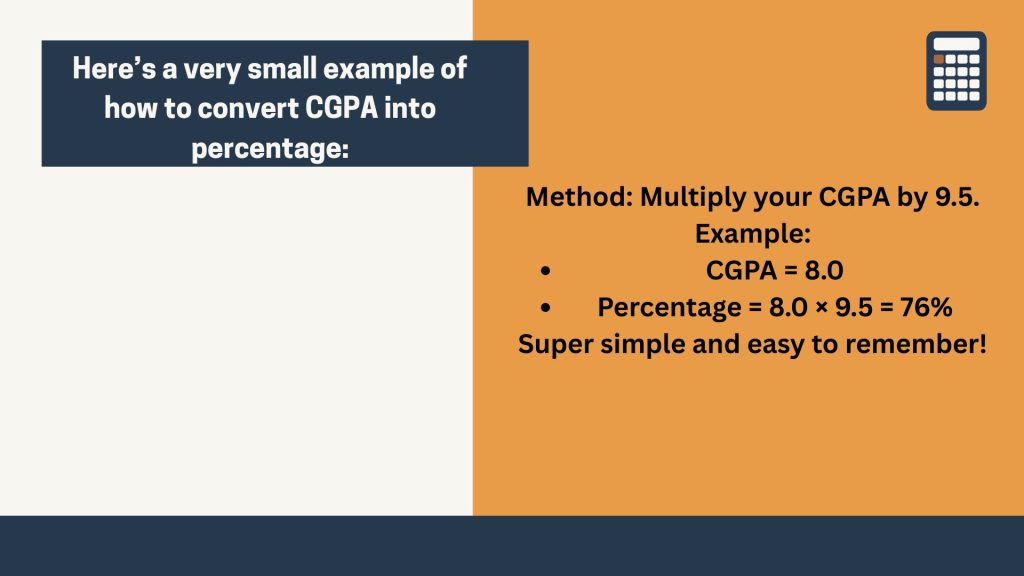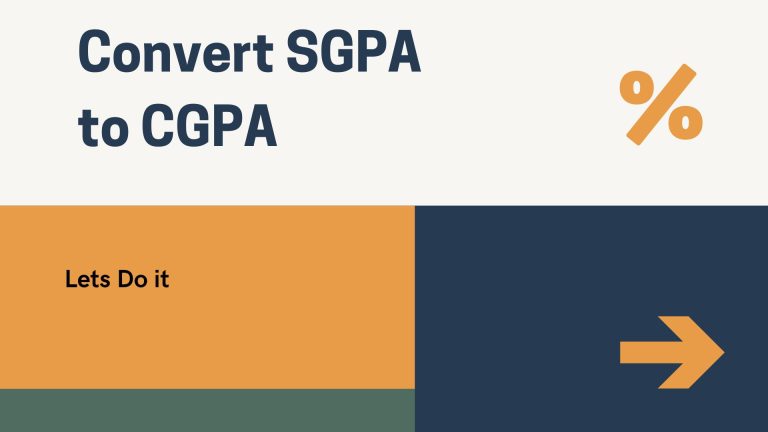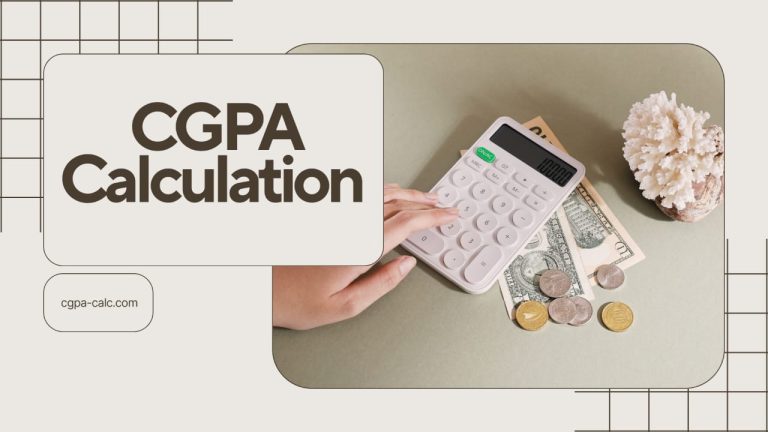How to Convert CGPA Into Percentage: A Student’s Complete Guide
Academic institutions across India use different grading systems, making it essential for students to understand conversion methods between CGPA and percentage formats. Whether you’re applying for higher education, seeking employment opportunities, or fulfilling administrative requirements, knowing how to accurately convert your academic performance metrics proves invaluable throughout your educational journey.
The conversion process varies significantly depending on your institution’s grading scale, academic board, and specific program requirements. Understanding these variations helps ensure accurate representation of your academic achievements across different platforms and applications.
Understanding Different Grading Scales and Their Applications
Most Indian universities employ either 10-point, 4-point, or 5-point grading scales, each requiring specific conversion formulas to achieve accurate percentage equivalents. The 10-point scale dominates higher education institutions, while 4-point systems appear commonly in international programs and some specialized courses.
Standard 10-Point Scale Conversion
Universities following the 10-point grading system typically use the formula: Percentage = (CGPA – 0.5) × 9.5. This calculation method ensures that a perfect CGPA of 10.0 converts to approximately 95%, maintaining the traditional 95-100% range for exceptional performance.
For practical application, consider these examples:
- A CGPA of 8.5 converts to (8.5 – 0.5) × 9.5 = 76%
- A CGPA of 7.2 becomes (7.2 – 0.5) × 9.5 = 63.65%
- A CGPA of 9.1 equals (9.1 – 0.5) × 9.5 = 81.7%

Alternative Conversion Methods
Some institutions prefer simplified multiplication: Percentage = CGPA × 9.5. This direct approach works well for quick estimates, though it may not align with official university conversion policies.
Another common method involves direct scaling: Percentage = CGPA × 10. However, this approach often overestimates performance and rarely matches institutional standards.
University-Specific Conversion Requirements
Different educational institutions have developed unique conversion methodologies reflecting their academic philosophies and evaluation standards. Recognizing these differences ensures accurate conversions for official purposes.
Engineering Colleges and Technical Universities
Technical education boards like VTU, SPPU, and GTU maintain specific conversion guidelines for engineering students. These institutions often account for practical work, project components, and laboratory assessments differently than traditional academic courses.
VTU engineering students typically use the standard (CGPA – 0.5) × 9.5 formula, while ensuring all practical components receive appropriate weightage in the original CGPA calculation. Project work and internship credits may require special consideration during conversion processes.
CBSE and State Board Conversions
The Central Board of Secondary Education provides official conversion charts for Class 10 and Class 12 students. CBSE’s approach differs from university methods, using predetermined ranges rather than mathematical formulas.
For CBSE conversions:
- 10.0 CGPA corresponds to 95-100%
- 9.9 CGPA equals 94-95%
- 9.8 CGPA represents 93-94%
State boards across India maintain varying conversion standards, making it crucial to consult official documentation from your specific educational board.
Professional Program Considerations
Specialized programs like MBA, medical courses, and law degrees may require modified conversion approaches due to their unique evaluation criteria and professional requirements.
Management Education Conversions
Business schools often use conversion methods that account for case study evaluations, group projects, and practical assignments alongside traditional examinations. The conversion process may incorporate different weightage for various assessment components.
Medical and Professional Courses
Medical colleges and professional institutions frequently maintain their own conversion standards, particularly when interfacing with licensing bodies and professional certification requirements.
Step-by-Step Conversion Process
Converting your CGPA requires systematic approach to ensure accuracy and compliance with institutional requirements.
Identifying Your Grading Scale
First, determine your institution’s specific grading scale by consulting official academic documents, student handbooks, or contacting the examination department directly. Grading scales vary even within the same university across different programs.
Applying Appropriate Formula
Once you’ve identified the correct scale, apply the corresponding conversion formula consistently across all calculations. Maintain precision throughout intermediate steps, rounding only the final result according to institutional standards.
Verification Methods
Cross-check your calculations using multiple approaches when possible. Many universities provide online conversion tools or official calculation services that can validate your results.
Common Conversion Scenarios and Solutions
Students encounter various conversion challenges depending on their academic background and target applications.
Multiple Institution Transfers
Students transferring between institutions may need to convert grades multiple times, particularly when moving between different grading scales. Each conversion should account for the specific requirements of both the originating and receiving institutions.
International Applications
Foreign universities may require specific conversion methods or third-party credential evaluation services. Research target institution requirements early in the application process to ensure compliance with their conversion standards.
Employment Applications
Employers may request percentage equivalents for comparison purposes, particularly when evaluating candidates from different educational backgrounds. Providing both CGPA and percentage values with clear conversion methodology enhances transparency.
Digital Tools and Resources
Modern technology offers numerous resources for accurate conversion calculations and verification.
Official University Calculators
Many institutions provide online conversion tools through their student portals or official websites. These calculators incorporate institution-specific formulas and policies, ensuring compliance with official standards.
Mobile Applications
Educational apps offer convenient conversion tools for quick calculations. However, always verify results using official institutional methods for important applications.
Verification Services
Some universities provide official conversion certificates or verification services for students requiring documented proof of their percentage equivalents.
Avoiding Common Conversion Mistakes
Several frequent errors can compromise conversion accuracy and create problems for academic or professional applications.
Formula Misapplication
Using incorrect conversion formulas represents the most common error. Always verify you’re applying the appropriate formula for your specific institution and grading scale.
Precision Problems
Maintaining appropriate precision throughout calculations prevents accumulation of rounding errors. Follow institutional guidelines for decimal places and rounding procedures.
Scale Confusion
Mixing up different grading scales can lead to significant conversion errors. Clearly identify whether your institution uses 4-point, 5-point, or 10-point scales before beginning calculations.
Documentation and Official Recognition
Obtaining official recognition for your conversion may be necessary for certain applications and opportunities.
Conversion Certificates
Many universities issue official conversion certificates upon request. These documents provide legal validation of your percentage equivalent and are often required for job applications or further education.
Application Requirements
Different applications may have specific conversion documentation requirements. Research these requirements early to allow sufficient time for obtaining necessary certificates or verifications.
Record Keeping
Maintain detailed records of your conversion calculations and supporting documentation for future reference and verification purposes.
Converting CGPA to percentage requires understanding your institution’s specific requirements and applying appropriate mathematical formulas consistently. Whether dealing with 10-point, 4-point, or alternative grading scales, accurate conversion ensures proper representation of your academic achievements across various platforms and applications. Always verify your calculations using official institutional resources and maintain proper documentation for future reference and validation needs.
For more info, visit the main Indian education authority: UGC (University Grants Commission) .


